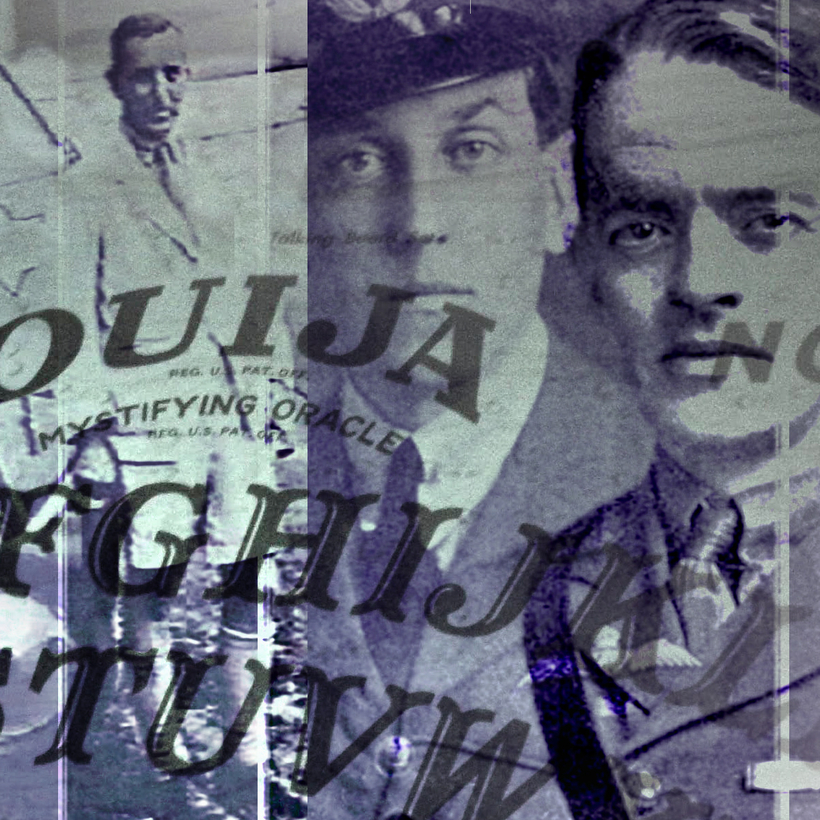It was the most singular prison break in history.
In the spring of 1918, as World War I dragged on seemingly without end, two British officers managed to escape from a remote prisoner-of-war camp in Turkey. Their plan—a con game worked meticulously on their captors—entailed no tunneling, no armaments, and no violence. Instead, they freed themselves using the only weapon they had: a Ouija board.
For the past few years, I’ve lived intimately with the officers’ astounding true story, which I had the privilege of chronicling in my new book, The Confidence Men. But it wasn’t until the manuscript was well under way that I realized how impeccably their early-20th-century deception explains the popular delusions of the early 21st.
Séance Saveurs
The plot was sheer madness. Wielding a handmade Ouija board, the officers, Harry Jones and Cedric Hill, would regale their Ottoman captors with a tale of buried treasure, the details “channeled” from the spirit world. Little by little, they would persuade those captors to lead them far from camp to dig for it. The hoax also required Jones and Hill to spend six months feigning insanity in a Turkish madhouse before they won their freedom.
In writing their story, I sought to solve a mystery that had endured for a century: How could so preposterous a scheme actually have worked? In the process, I had to answer the two crucial questions on which The Confidence Men hinges: How does a master manipulator create and sustain faith? Why do his converts persist in believing things that are patently false?

The answers center on the psychological art called “coercive persuasion,” colloquially known as brainwashing. Jones had been a magistrate in civilian life, schooled in courtroom argumentation; Hill was a brilliant amateur magician. Both callings entail a keen command of this art.
The aim of coercive persuasion is to control another person’s mind. This can be done by force, through direct manipulation of the subject’s brain (as with drugs or electroshock) or via the con man’s method of choice—an indoctrination so subtle that the subject remains unaware of what’s happening. All three methods have the same goal: to pre-empt critical reasoning by the subject and compel his or her adherence to even the most outlandish ideas.
Coercive persuasion is a going concern in modern life, routinely used by advertisers, cult leaders, and other masters of influence. At its most effective, it can lull subjects into adopting radical beliefs, opening their pocketbooks, or signing away their property.
It is also a perennial tactic of political demagogues. As I explored Jones and Hill’s story, I realized that the methods they used to con their captors into searching for nonexistent treasure, with clues furnished by nonexistent ghosts, were the very means by which a swath of the 21st-century American public has been gulled into holding ideas that are equally specious—and far more dangerous.
Such beliefs (top Democrats are running a child-sex-trafficking ring; coronavirus vaccines rewire your DNA) are textbook examples of coercive persuasion at work.
Perhaps this should come as no surprise—after all, the seeds of those beliefs were implanted, and aggressively nurtured, by one of the most masterful confidence men of our age.
It should be no surprise, either, that so many Americans persist in these beliefs in the face of all reason. “Belief is the normal response to a statement,” one 20th-century psychologist noted. “Belief is passive; doubt is active.” In the end, as my hero Cedric Hill sagely observed more than a hundred years ago, “True Believers remain True Believers through everything.”
Margalit Fox is a former senior writer for The New York Times. Her new book, The Confidence Men: How Two Prisoners of War Engineered the Most Remarkable Escape in History, will be published by Random House on June 1

